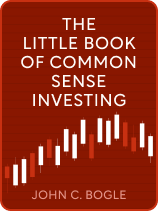

This article is an excerpt from the Shortform book guide to "The Little Book of Common Sense Investing" by John C. Bogle. Shortform has the world's best summaries and analyses of books you should be reading.
Like this article? Sign up for a free trial here.
What’s the difference between an index vs. mutual fund? How do index funds and mutual funds make money for investors?
Traditional index funds own shares of an entire market (e.g. the S&P 500) and aim to generate market-average returns. In contrast, mutual funds own shares of companies selected by their analysts and aim to generate profits by beating the market returns by buying and selling stocks at opportune moments.
Keep reading to learn how index funds differ from actively managed mutual funds.
Index Funds vs. Mutual Funds
When investing in the stock market, index funds are one option available to investors. Put simply, index funds allow investors to purchase portfolios—collections of stocks—that represent large portions of the stock market. In other words, investors can invest money into index funds, which is then used to purchase a portfolio representative of the stock market.
(Shortform note: Index funds earn their name because they aim to track certain market indices—groups of securities (such as stocks and bonds) that represent different areas of the market. As such, there are different types of index funds. For example, although traditional index funds aim to reflect the market as a whole, Fidelity’s Financial Index ETF aims to reflect the financial sector of the US stock market in particular.)
Bogle observes that Traditional Index Funds (TIFs) essentially represent the entire stock market. For example, some TIFs own shares of the entire S&P 500, which tracks the stock performance of the 500 largest companies in the US. Because they represent the entire market, TIFs’ goal is to generate returns in line with the market’s average returns.
(Shortform note: Strictly speaking, because the S&P 500 only includes publicly traded companies, it doesn’t contain the 500 largest companies in the US—because some of these companies are privately traded. The Fortune 500, which ranks the 500 largest US companies based on their revenue, includes these privately traded companies in addition to many of those on the S&P 500.)
Because index funds reflect the stock market’s long-term growth, Bogle notes that investors are supposed to hold them indefinitely. In light of this strategy, index fund managers play a relatively small role and incur fewer fees and commissions.
The key difference between an index vs. mutual fund is that the latter is actively managed. In other words, mutual funds are overseen by financial managers, assisted by large teams of analysts, who try to beat the stock market returns.
(Shortform note: Although it’s standard to distinguish between mutual funds and index funds, it bears mentioning that index funds are technically a kind of mutual fund—one that simply tracks a given stock index. However, when investment experts like Bogle discuss “mutual funds,” they’re typically referring to actively managed mutual funds. So, we’ll follow suit with Bogle in this guide and use “mutual fund” interchangeably with “actively managed fund.”)
Because they attempt to outperform the market, mutual fund managers can’t follow the same strategy as index funds, which attempt to generate market-average returns. For one, mutual fund portfolios contain far fewer stocks than index funds. Additionally, because mutual fund managers are constantly purchasing and selling stocks, Bogle observes that mutual funds have much greater portfolio turnover than index funds.
(Shortform note: While mutual funds are actively managed, some exchange-traded funds—pre-packaged pools of stocks that can be traded daily—are managed by “robo-advisors.” Basically, these robo-advisors are algorithms that automatically manage your portfolio for you. Because robo-advisers replace human managers, their funds typically charge lower expense ratios than the average mutual fund.)

———End of Preview———
Like what you just read? Read the rest of the world's best book summary and analysis of John C. Bogle's "The Little Book of Common Sense Investing" at Shortform.
Here's what you'll find in our full The Little Book of Common Sense Investing summary:
- A simple winning strategy for novice investors
- Why index funds are superior to mutual funds
- Why bonds belong in your investment portfolio






